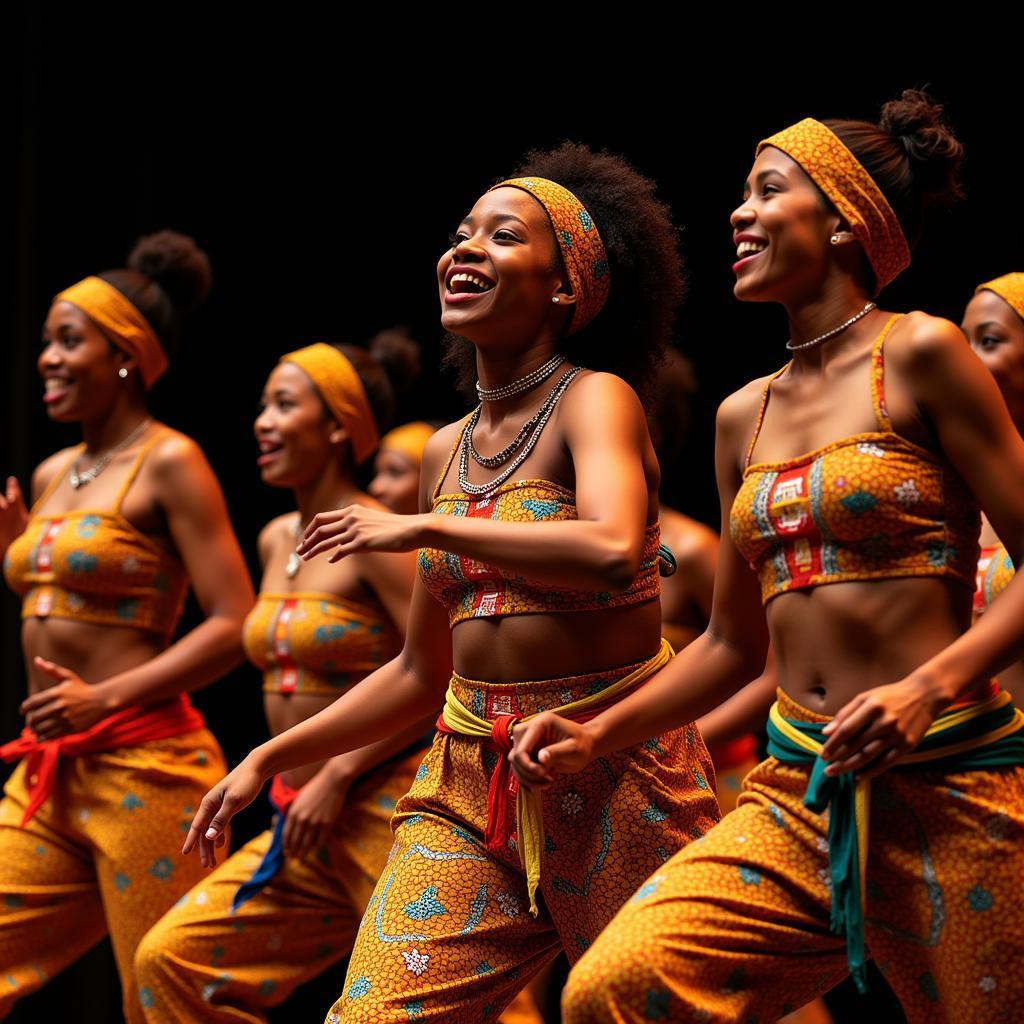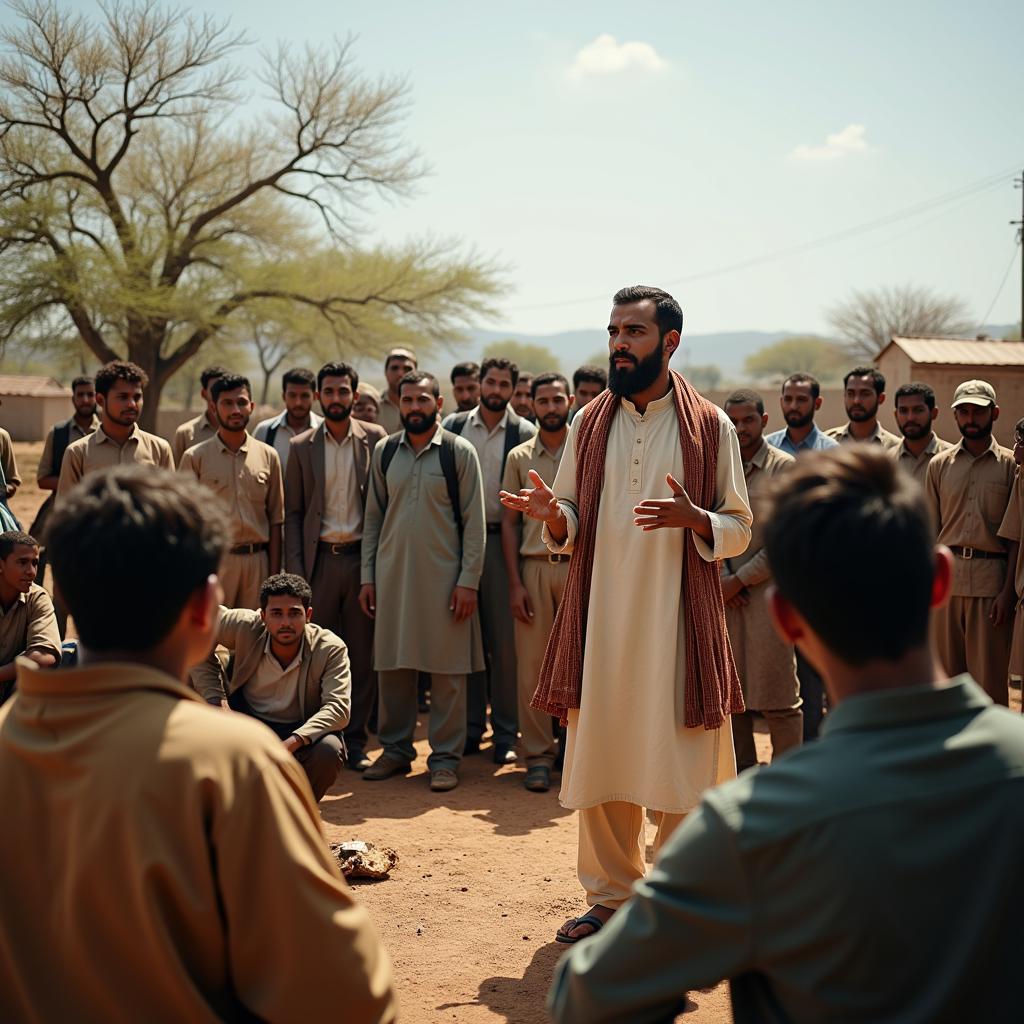The Captivating World of African Dance Choreography
African Dance Choreography is more than just a series of steps; it’s a vibrant tapestry of storytelling woven through rhythmic movements, powerful gestures, and evocative expressions. Deeply rooted in tradition and rich in symbolism, it reflects the history, spirituality, and cultural identity of diverse African communities.
 African dance choreography performance
African dance choreography performance
Delving into the Heart of African Dance
Unlike many Western dance forms, African dance choreography emphasizes the interconnectedness of the body. Movements often originate from the core, radiating outwards to engage the entire body in a fluid and rhythmic dialogue. This holistic approach not only creates visually stunning choreography but also fosters a deep connection between the dancer, the music, and the cultural context of the dance.
 African dance choreography workshop
African dance choreography workshop
The Language of Movement: Styles and Influences
From the energetic Gnawa dances of Morocco to the graceful movements of the Gumboot dance in South Africa, African dance choreography encompasses a myriad of styles, each with its unique characteristics and cultural significance. Some prominent styles include:
- Afrobeat: Infused with the rhythms of Afrobeat music, this contemporary style is energetic and expressive, often incorporating elements of jazz and hip hop.
- Sabar: Originating from Senegal, Sabar is characterized by its fast-paced footwork and polyrhythmic movements, often accompanied by live drumming.
- Ndlamu: A powerful dance form practiced by the Zulu people of South Africa, Ndlamu involves high kicks and synchronized movements, traditionally performed by men in a show of strength and unity.
It’s important to note that these are just a few examples of the vast and diverse world of African dance. Each region and ethnic group has its own unique dance traditions, often influenced by historical events, social customs, and spiritual beliefs.
Beyond Steps: The Cultural Significance
African dance choreography is not merely entertainment; it’s a powerful tool for cultural preservation and transmission. Through dance, communities celebrate their heritage, pass down stories from generation to generation, and reinforce social bonds. For example, the “African chair” dance, found in various forms across the continent, often symbolizes community and the importance of supporting one another.
Furthermore, African dance often plays a vital role in rituals and ceremonies, marking important life events such as births, weddings, and funerals. The movements and costumes take on symbolic meanings, connecting the dancers and observers to their ancestral spirits and the natural world.
FAQs about African Dance Choreography
1. What makes African dance choreography unique?
African dance choreography distinguishes itself through its focus on whole-body movement, polycentrism (moving multiple body parts independently), improvisation, and its deep connection to cultural storytelling and symbolism.
2. Is there a single type of African dance?
No, Africa is a vast continent with diverse cultures, each boasting its own unique dance traditions and styles. From the energetic Afrobeat to the graceful Gnawa, the variety is immense.
3. What is the role of music in African dance choreography?
Music is the heartbeat of African dance. The rhythms, often played on traditional instruments like drums and percussion, dictate the movements and provide a framework for improvisation.
4. Can anyone learn African dance choreography?
Absolutely! While some styles require a certain level of physicality, there are African dance classes and workshops suitable for all ages and skill levels.
5. Where can I experience authentic African dance performances?
You can find performances at cultural centers, festivals, and events dedicated to African arts and culture. Online platforms also offer a glimpse into the vibrant world of African dance.
Exploring the Rhythms Further
This exploration merely scratches the surface of the captivating world of African dance choreography. From its historical roots to its contemporary interpretations, this dance form continues to evolve, captivating audiences worldwide with its raw energy, intricate movements, and profound cultural significance. So, whether you’re a seasoned dancer or simply curious about this vibrant art form, delve deeper, explore different styles, and experience the magic of African dance choreography firsthand.
Need Help?
For any assistance, please contact us at:
Phone Number: +255768904061
Email: kaka.mag@gmail.com
Or visit us at:
Mbarali DC Mawindi, Kangaga, Tanzania.
Our customer service team is available 24/7.


